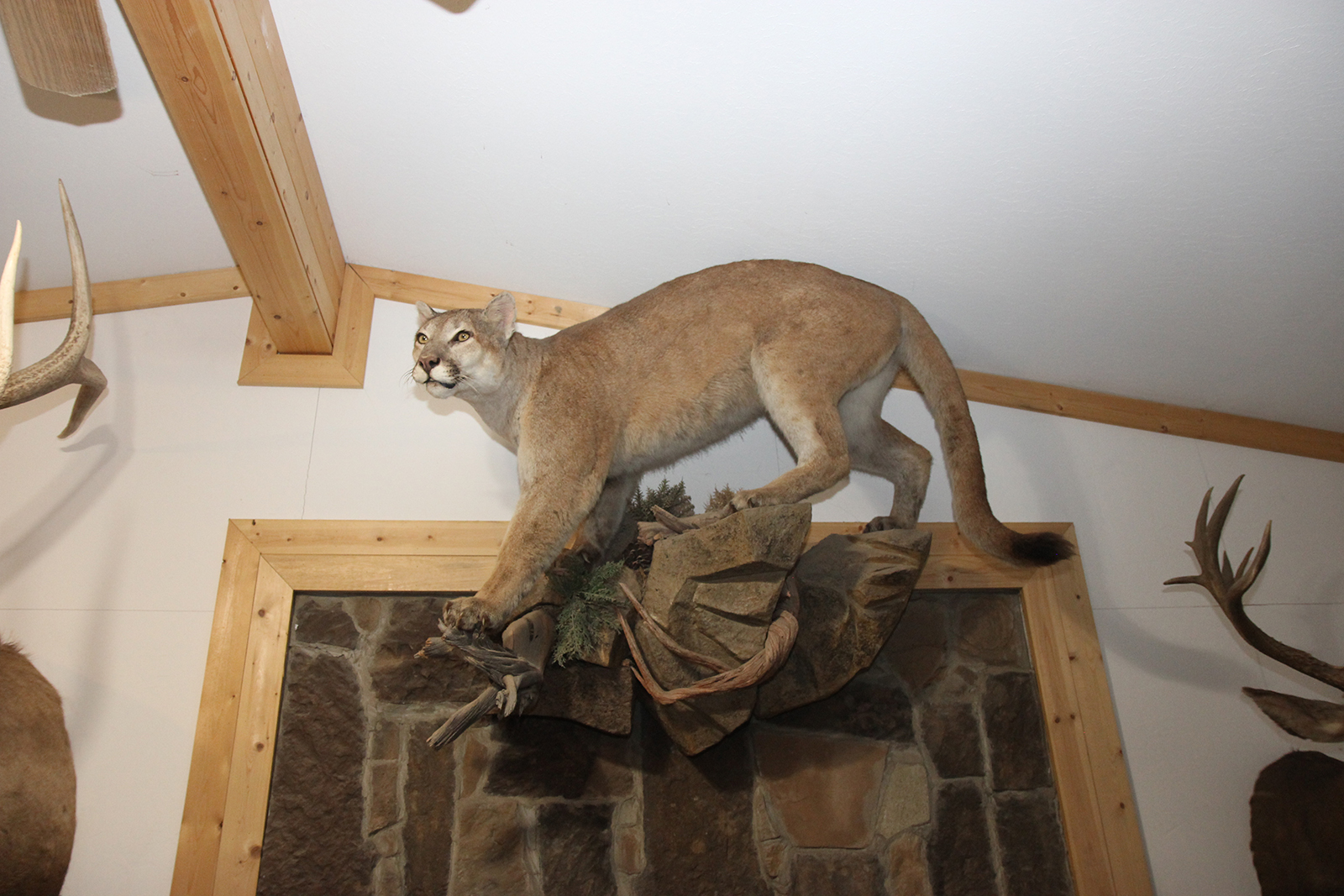
Essay
Hot Wind Over Cool Water
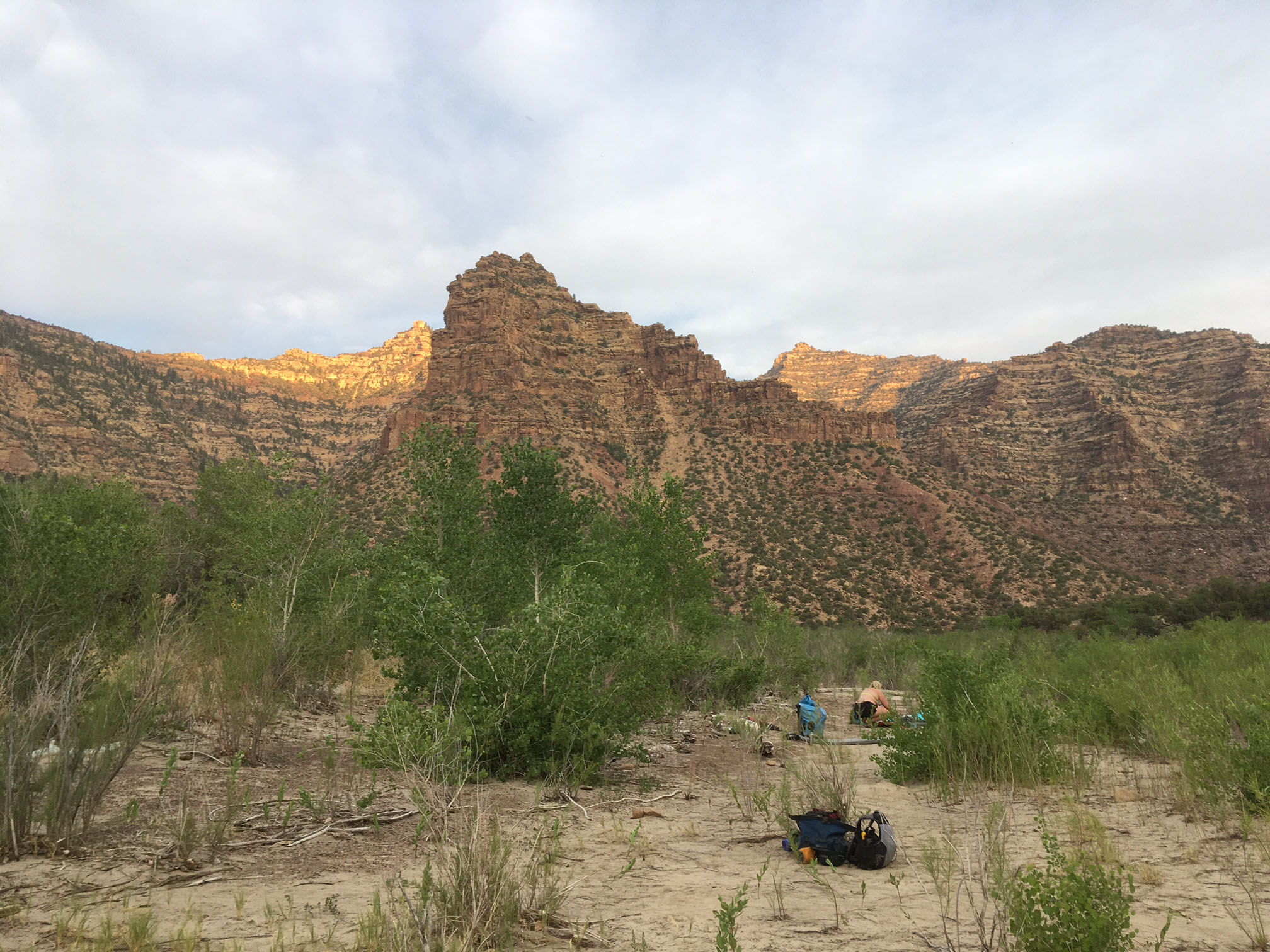

by Hannah Holm – 9.23.2021 – 5 min. read
A thin haze appeared in the afternoon between our rubber boats and distant fins of burnt-orange rock, while a hot wind touched our faces, hands—any skin not taking refuge beneath cool, wet cloth. Later, the haze thickened, mixed with cirrus clouds and gave the golden-hour light a reddish tint.
The river still rushed by, and vibrant leaves in our camp’s young cottonwood gallery fluttered above me. The voice of the yellow-breasted chat that had berated us from cliff walls echoed in my mind, along with the scent of sage and sumac from a lunchtime visit to petroglyphs up a tributary canyon. I was fully immersed in this place, Desolation Canyon on the Green River in eastern Utah. No internet, no phone reception, no news or other distractions. Just the river, the canyon, and my companions on this week-long writing retreat.
But the sky’s tint and the hot wind hinted at what was happening outside the sheltering canyon walls. Record-breaking heat and nearby wildfires, starting early this year. The river itself gave more clues, to those who knew how to recognize them. Low flows and tame rapids, in June. A bear and cub were by the river when they should have been finding forage at higher elevations. We followed a long, irregular stripe of mineral crust punctuated by half-dead clumps of grass on the eastern wall. An extended seep that wasn’t seeping, the ghosts of hanging gardens.
Extended drought—or more accurately, aridification—is making its mark on the landscape and on people’s lives. News that I didn’t read during those days on the river was about ever shrinking forecast inflows into Lake Powell and how the states that share the Colorado River might manage reduced water supplies within a legal framework based on imagined bounty.
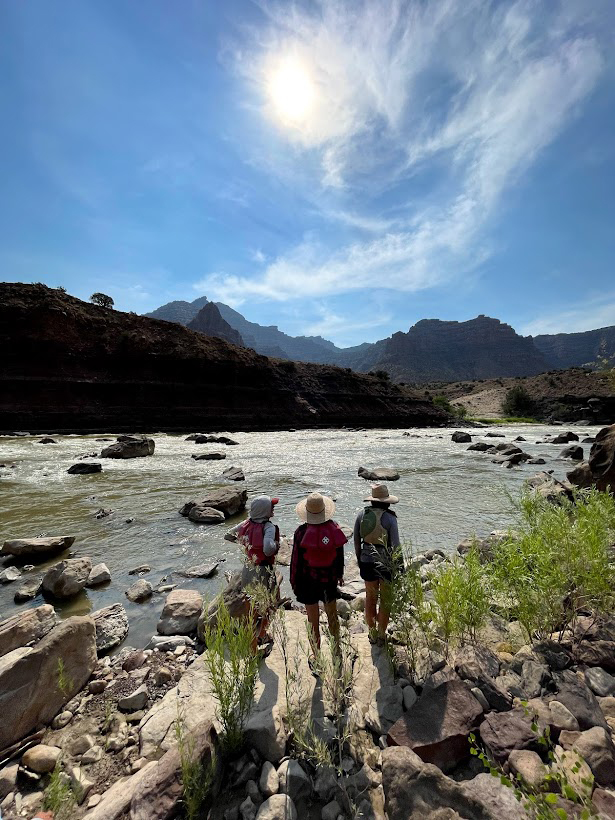
I write about these things, too, but on the river, I was trying to find words beyond my habitual short-hand to describe our hydrology and water policy developments. For over ten years, I’ve been learning and communicating about how people built an unbalanced system in the Colorado River Basin, constructing the plumbing for demands to exceed supplies, and how we can worm our way out of the worst consequences of that fundamental problem for fish and farms. I still think that matters, and I still think we have options.
But the river showed me that the transformation in our landscape is bigger than that, beyond the reach of our tinkering. Even far from ditches and diversions, seeps go dry and forage for bears thins out. We can micromanage irrigation water to get the most from every drop, clean up toilet water to a pristine state, and adjust reservoir releases to help endangered fish. We can pay farmers to fallow fields. But we can’t pay the hot wind to stop taking water from the sage, the sumac and the dirt. There’s no negotiating on this point, and no escape, not even in one of the most remote canyons in the lower 48.
Aridification carries a heavier emotional weight when I see it on the land than when I read papers about it or watch presentations in windowless conference rooms. It’s hard to see things change, irrevocably. To walk through a sick forest and know that it won’t grow back the same. To know that going away from people and the things we’ve built can’t actually take me back to a less damaged state of nature.
Since that trip down Desolation Canyon, back home in Grand Junction, Colorado, the temperatures have eased from the 100s into the 90s, and the summer rains we’ve missed for a couple of years have come back. It’s a welcome respite, and the dwarf ash and pinyon pines I see on my trail runs look perkier than they have in ages. I know these rains aren’t enough to reverse the harsh trend we’re in, but they lift my spirits and give all living things a break, a chance to gather strength before facing the next onslaught of hot wind.
We can’t turn back the clock and we can’t run away, but we can gather strength from an unexpected storm. We can diligently tinker where tinkering can work. And we can dip cloth into cool water, feel it dribble across our skin, and listen to the birds as we drift down the river.
Republish
Republish Our Content
Corner Post's work is available under a Creative Commons License and under our guidelines:
- You are free to republish the text of this article both online and in print (Please note that images are not included in this blanket licence as in most cases we are not the copyright owner) but:
- you can’t edit our material, except to reflect relative changes in time, location and editorial style and ensure that you attribute the author, their institute, and mention that the article was originally published on Corner Post;
- if you’re republishing online, you have to link to us and include all of the links in the story;
- you can’t sell our material separately;
- it’s fine to put our stories on pages with ads, but not ads specifically sold against our stories;
- you can’t republish our material wholesale or automatically—you need to select stories to be republished individually;
- you have to credit us, ideally in the byline; we prefer “Author Name, Corner Post,” with a link to our homepage or the article; and
- you have to tag our work with an editor’s note, as in “This article was paid for, developed, and originally published by Corner Post. Corner Post is an independent, nonprofit news organization. See cornerpost.org for more.” Please, include a link to our site and our logo. Download our logo here.
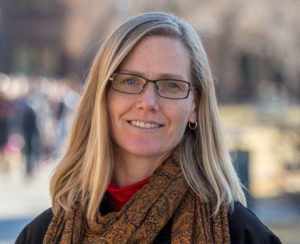 Hannah Holm
Hannah Holm
Director, Hutchins Water Center at Colorado Mesa University
Hannah Holm is the Director and co-founder of the Hutchins Water Center at Colorado Mesa University, which promotes research, education and dialogue to address the water challenges facing the Upper Colorado River Basin. The Hutchins Water Center was established in 2011.
Hannah previously facilitated the Grand Valley and Lower Gunnison Wise Water Use Council, advocated for stronger drinking water protections with Western Colorado Congress, and served on her local watershed group board in Pennsylvania. Earlier in her career, Hannah worked for North Carolina General Assembly, where she staffed committees on the Environment, Natural Resources, Sustainable Agriculture and Smart Growth.
Hannah has a joint Master’s degree in Community & Regional Planning and Latin American Studies from the University of Texas at Austin and a Bachelor’s degree in Anthropology from Macalester College in St. Paul, MN.
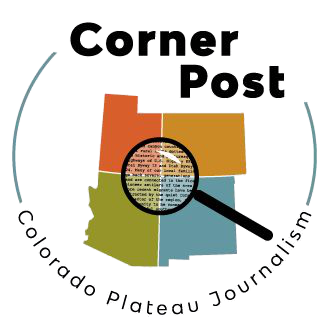
 Corner Post is a member of the Institute for Nonprofit News—a nationwide network of independent, nonprofit, nonpartisan news organizations. Learn more at
Corner Post is a member of the Institute for Nonprofit News—a nationwide network of independent, nonprofit, nonpartisan news organizations. Learn more at  Our stories may be republished online or in print under
Our stories may be republished online or in print under 